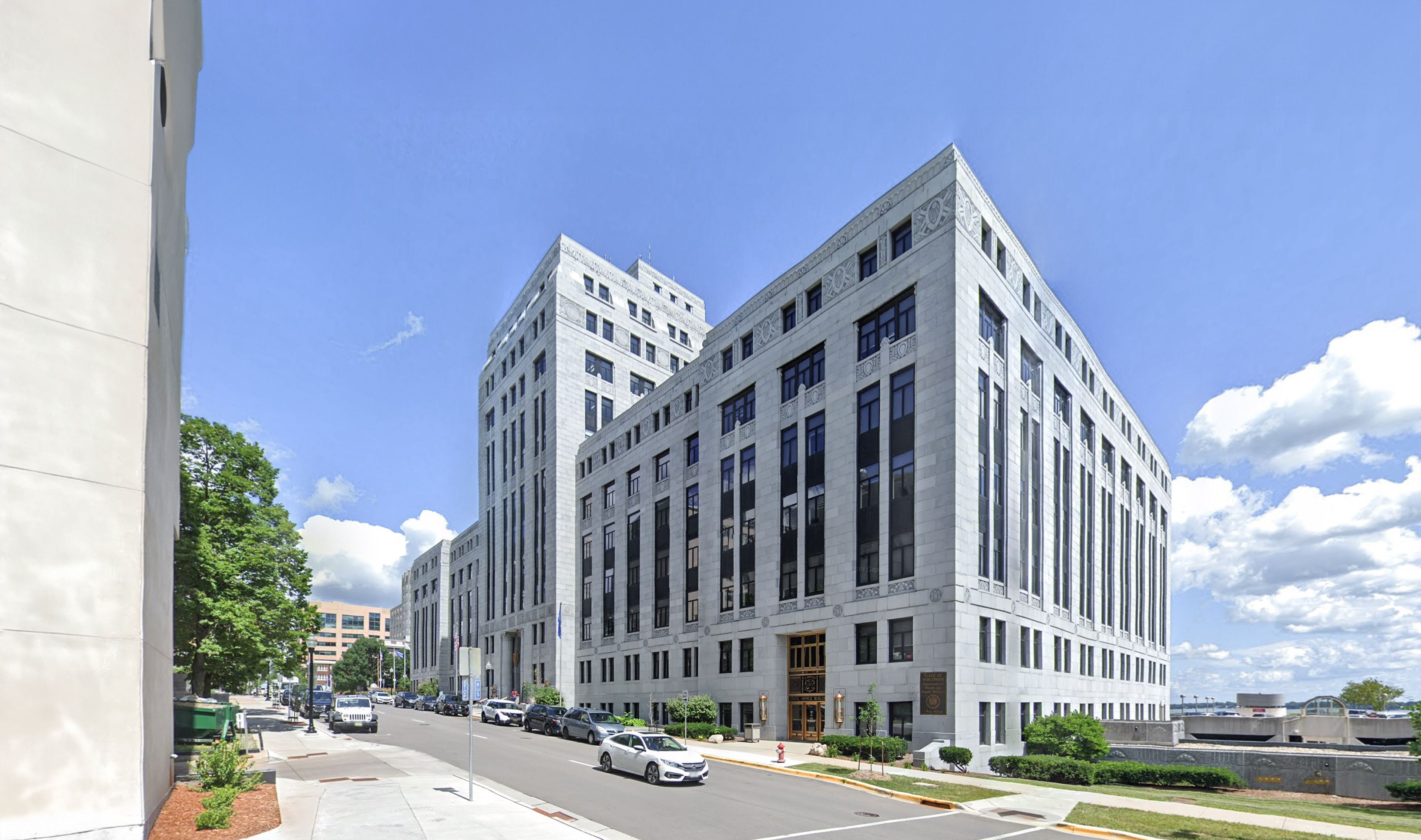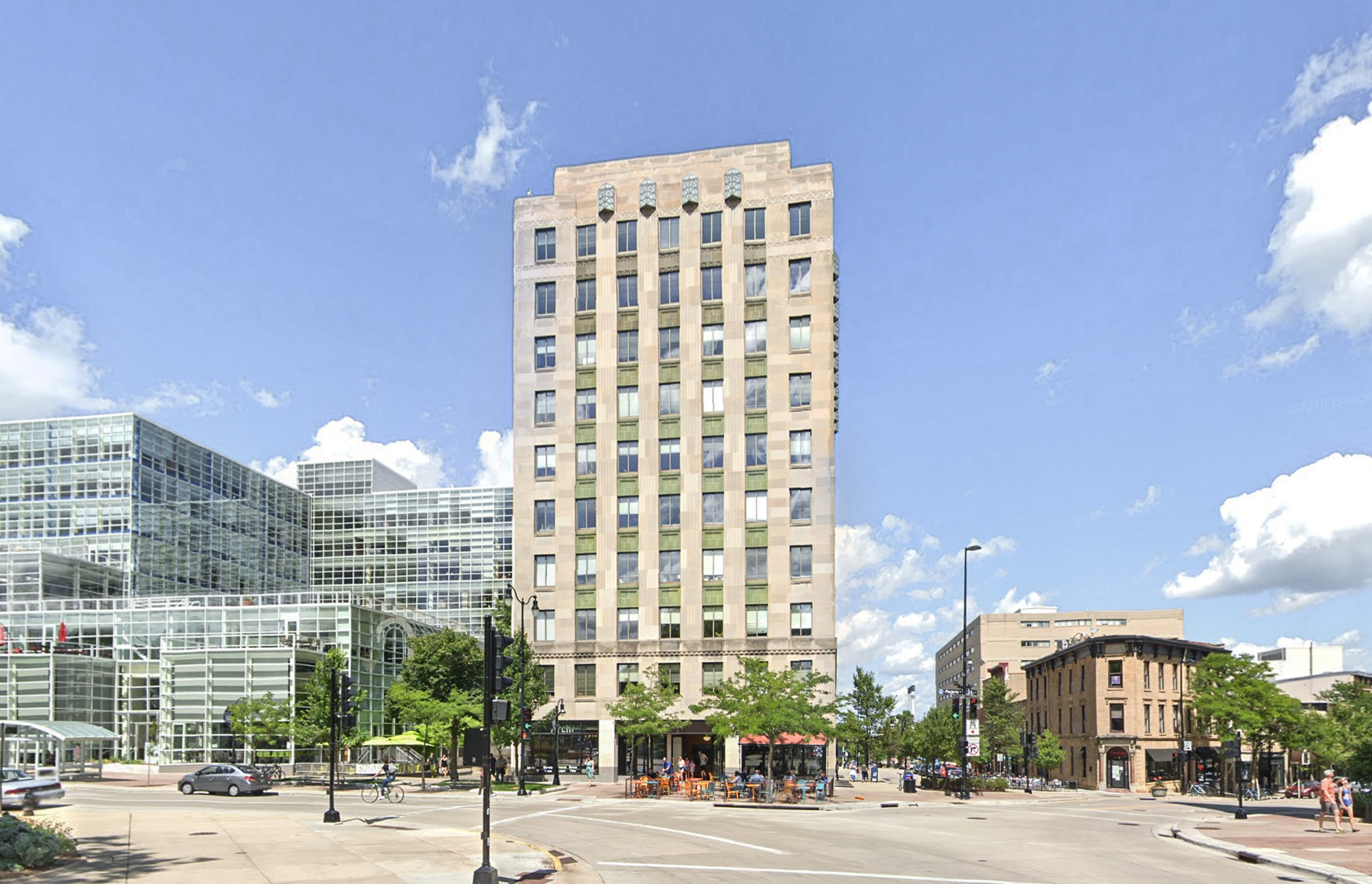The State Office Building is an Art-deco skyscraper designed in 1929 by Arthur Peabody, and built between 1930 and 1931 in Madison, WI.
Its precise street address is 1 W Wilson Street, Madison, WI. You can also find it on the map here.
The State Office Building is a structure of significant importance both for the city of Madison and the United States as a nation. The building embodies the distinctive characteristic features of the time in which it was built and the Art Deco style. Because of that, the State Office Building was officially included in the National Register of Historic Places on January 28th 1982.
The building has been restored 3 times over the years to ensure its conservation and adaptation to the pass of time. The main restoration works happened in 1942, 1959 and 2013.


